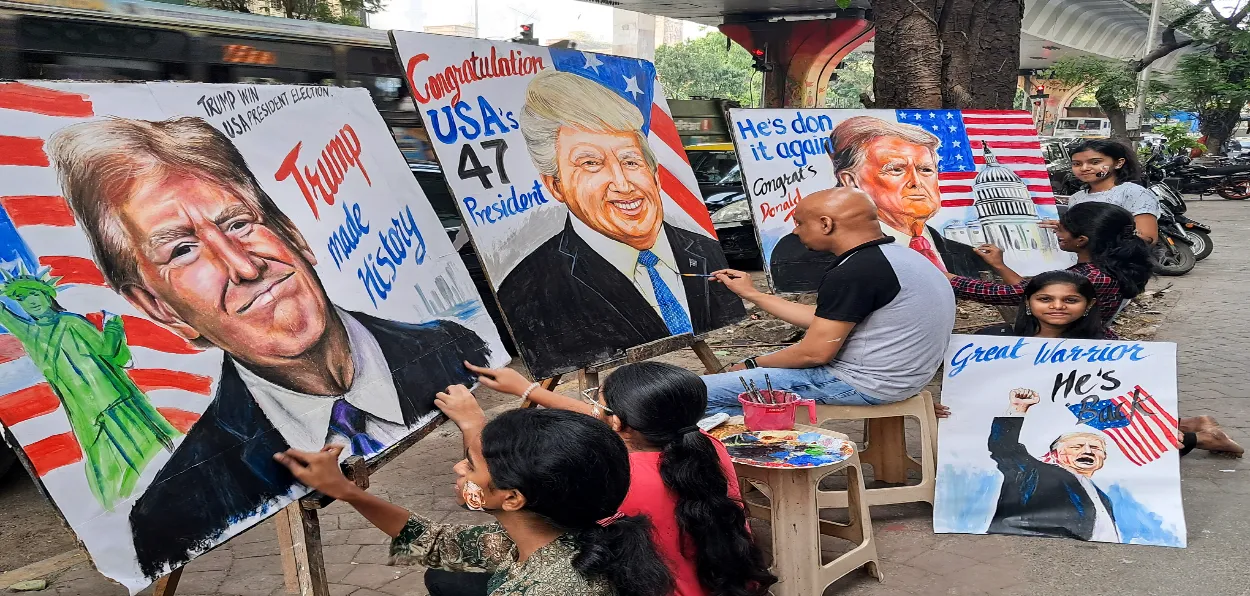
 Sushma Ramachandran
Sushma Ramachandran
The election of Donald Trump as the next U.S. President has created global concerns over the prospect of trade wars. His declarations during the campaign about raising tariffs on imports from all countries with a special focus on China means that the open nature of the American market will change. At the same time, it must be clarified that protectionist trends have already taken root in the international trading system.
Developed economies are trying to build tariff walls to prevent Chinese goods from overtaking their industries. It is for this reason that the European Union has recently begun talks with China on punitive tariffs proposed to be levied on electric vehicles. India has similarly been raising import duties in the past few years, a gradual process that goes counter to the path of liberalization charted out in the 1991 economic reforms. Trump’s plans are thus in line with protectionist attitudes that have arisen in recent times throughout the world.
It also seems evident that tariffs on this country’s exports to the U.S. are set to rise significantly. The silver lining is that this will affect nearly all trading partners so it may not affect the competitive edge of Indian goods. It must be recalled that Trump had carried out similar measures in his previous term as president.
He had hiked steel and aluminum import duties for numerous countries including India. What was more disturbing at the time was the decision to withdraw the long-standing Generalised System of Preferences (GSP) that allows duty-free access to goods from developing economies. He also complained about the high tariff regime here with a specific reference to the iconic Harley Davidson motorcycles.
The response here has altered a great deal since then. Commerce Minister Piyush Goyal now says that cutting duties on Harleys is not an issue as there is no comparable manufacturer here. A more pragmatic approach is being adopted on domestic levies. Besides, it must be recognized that the inexorable rise in import duties has not yielded tangible results in terms of increasing value addition in export products. For instance, domestic value addition in electronics goods exports has so far only reached 15 to 18 percent with a recent official report envisaging a target of 35 to 40 percent over the next five years.
Finance Minister Nirmala Sitharaman has also hinted that there will be a change of strategy in the area of tariffs. In some recent comments, she said the government could consider easing import taxes as long as it did not affect domestic businesses. Such a flexible approach will yield rich dividends in dealing with the U.S. in the coming days. Even so, other elements of trade policy also need to be made more proactive. For instance, the process of entering into free trade agreements with key trading partners needs to be speeded up.
This will ensure that exporters get easier access to key markets. The problem is that critical FTAs with the U.K. and the European Union are taking longer than expected to be tied up. Pacts have been concluded with the UAE, the country’s third largest trade partner, and Australia but more needs to be done in this area.
It is against this backdrop that Niti Aayog CEO B.V. R. Subrahmanyam has suggested that India should join two major regional trade blocs -the Regional Comprehensive Economic Partnership (RCEP) and the Comprehensive and Progressive Agreement for Trans-Pacific Partnership (CPTPP). The proposals are startling given that India had walked out of the RCEP because it would enable China to send goods via third countries. There has also been some hesitation about the CPTPP, one of the world’s biggest trading blocs.
The advantage of joining the RCEP is gaining access to the burgeoning Southeast Asian market. At the same time, domestic tariffs will have to be cut reciprocally. The Niti Aayog chief has argued this will benefit MSMEs which account for the bulk of the country’s exports. He has also highlighted the reality that high tariff barriers have been a disincentive for companies adopting the China Plus One strategy. As a result, Vietnam, Indonesia, and Malaysia have reaped greater benefits.
The proposal to join the RCEP must be viewed, however, with some caution. Reviews of the Asean- India free trade agreement have so far shown that Asean has gained more than India. Thus entering RCEP may ultimately end up, as was originally envisaged, with China using the route to send its products via third countries.
On the other hand, the suggestion to join the CPTPP has greater merit. This is a trans-Pacific association that includes 12 countries Japan and Vietnam, Chile, and Canada, and excludes both China and the U.S. but covers a vast area and has the potential to open up new trade avenues.
Regarding tariff cuts, the Niti Aayog chief has hit the proverbial nail on the head. There is an urgent need to shed protectionist attitudes on the grounds of safeguarding domestic industry interests. There is bound to be some concern over cheap Chinese imports but this is a problem that is being tackled by most large economies. The focus needs to be on aligning tariffs with the rest of the world as this will enable India to plug into global supply chains.
With the advent of the Trump administration, it is clear that a new era will begin in global trade. There is some nervousness, not just in China, but in other leading trade partners of the U.S. like the E. U. over the prospect of trade wars being unleashed on the world. As far as India is concerned, however, it may be an opportune time to make relevant changes to trade policies so that it can become a bigger player on the world stage.
ALSO READ: In Kerala people suffering incurable pain are not left alone
However, these changes will need to be made rapidly so that goods from this country can find buyers in more lucrative markets. At the same time, the plan to bring down tariff barriers in selected areas is bound to spur greater competition in domestic industry.
